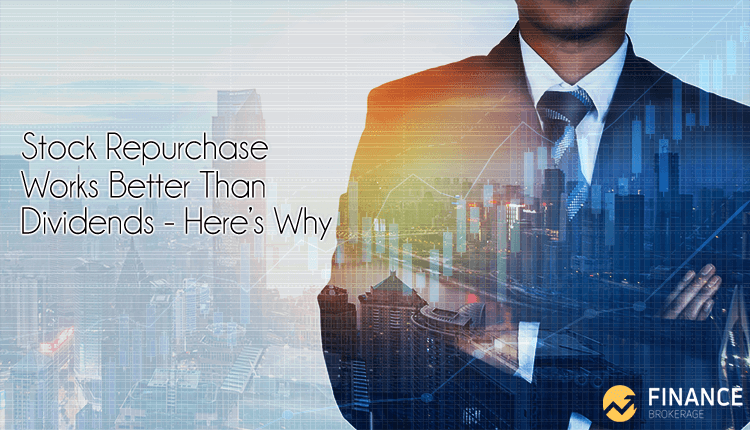
Stock Repurchase Works Better than Dividends – Here’s Why
For a lot of publicly traded companies, stock repurchase/stock buybacks come in large part of their profit-allocation strategies. In this post, we’ll provide you with an in-depth understanding of why companies choose stock buybacks. With this, you’ll understand why publicly traded companies choose to do share buybacks and how it impacts the investors.
Stock Buyback Explained
Think of a publicly traded company. This company plays fairly wanting to return a few of its revenues to its investors. Rather than giving out clear cash, most company chooses to purchase shares from its own stocks. The cash meant returning to the investors will then be out of its circulation.
Publicly traded companies can choose between two methods to share their profits. One is through dividends, more familiar among the two methods. But still, the second one, the stock buyback method can also be necessary for investor’s benefits.
To clarify, the companies can also choose to do both methods – a combination. Fact is, a lot of companies do both exactly.
Why companies buyback stocks?
There are a few notable reasons why company do buyback stocks. In this post, we’ll provide about five reasons why. We’ll explain each for further understanding.
One, buybacks can provide stronger earnings and growth. Upon buybacks, the company profits are to spread out towards fewer shares. That makes the company earnings higher within its per-share basis. For instance, if there are about 1 million shares, it is equivalent to earnings per share (EPS) of $5.00. When the company purchases about 50,000 within its shares throughout a year, there will be $5 million profit spread through 950,000 shares. That provides about 5.26 earnings per share.
Two, buybacks could become more tax-friendly for the investors. On the investor’s view, a stock buyback is somehow a method of giving back the capital as it lacks tax implications. Whenever you hold standard brokerage stock account, you are to pay tax for the dividends you receive every year. In the United States stock dividends are considered as qualified dividends. That still has about 15 to 20 percent dividend tax rate for the investors.
Three, it could help offset the stock-based compensation. A lot of companies offer stock-based benefit for their employees. That of which could include an impure effect with time. For instance, a company has 1 million overall shares issuing about 20,00 new shares towards its employees. Each existing share will then represent a 2 percent lesser equity for the company.
Four, it is easier to cut in tough times. Dividends are steady as expected by the investors. Whenever it grows over time, it means a definite addition. However, there are some ways of making a stock price drop quicker than cutting a dividend. For example, a company pays out 30 percent of the profits thru dividends. The earnings will drop at about 70 percent with still not enough money going in sustaining the dividend. In buybacks, when times get tough, a company could give back lesser shares making a safe and sustainable business flow.
Five, it has limited potential to reinvest towards growth. If a company profits, it could go through three choices to do with its money. As we’ve mentioned both dividends and buybacks, the last choice will be to reinvest in the business to fuel growth. Now the last choice can help the company grow and still it could choose to do buybacks doing fair share with its investors.
-
Support
-
Platform
-
Spread
-
Trading Instrument




